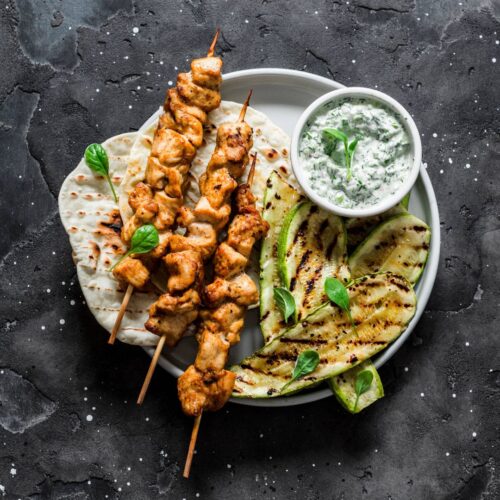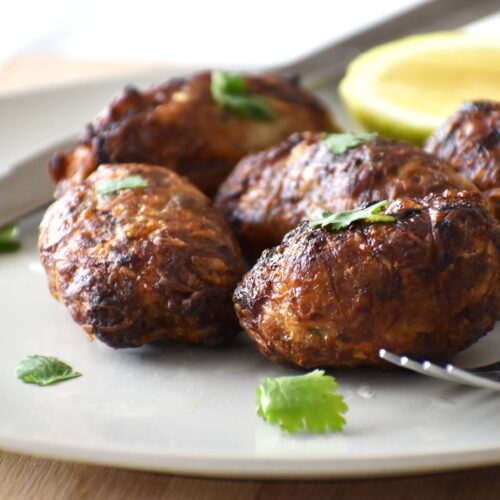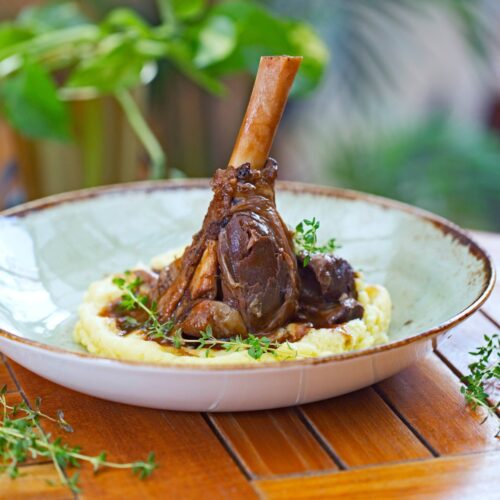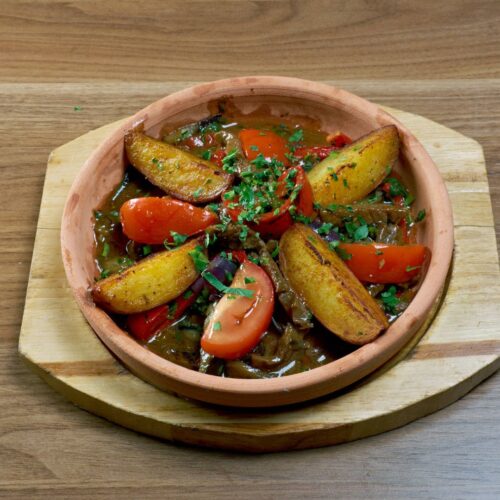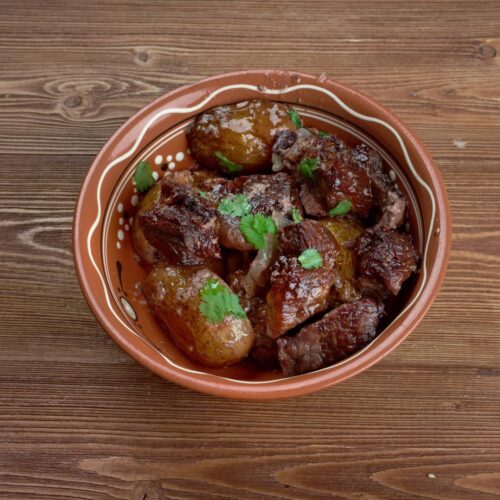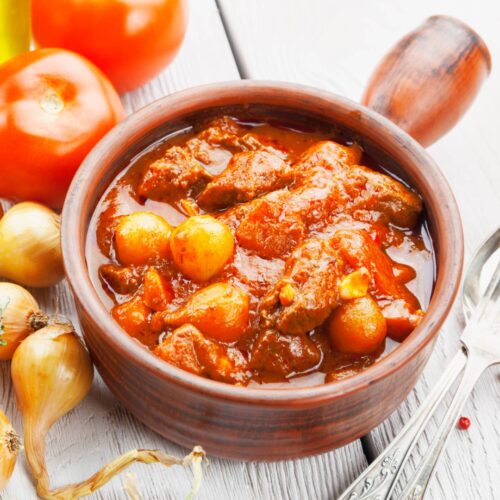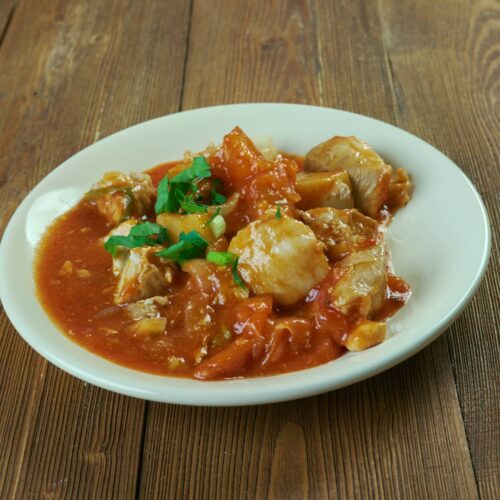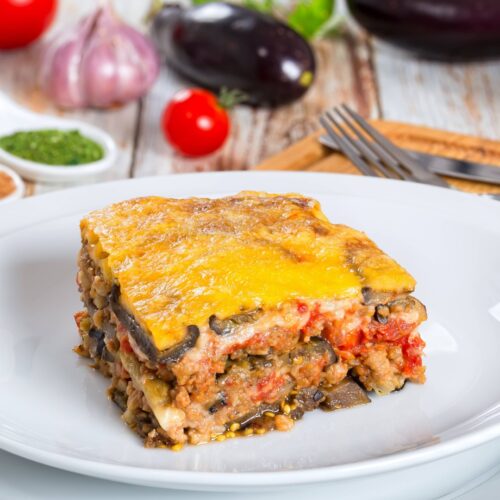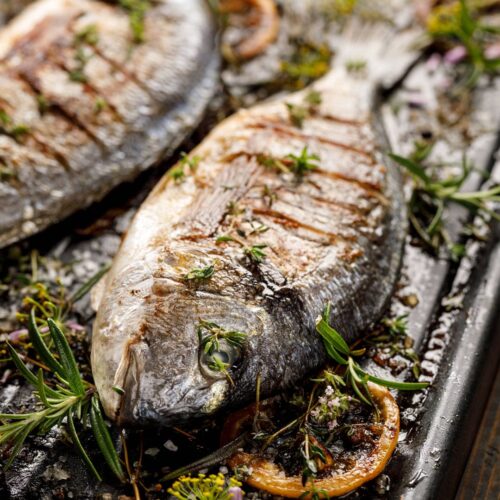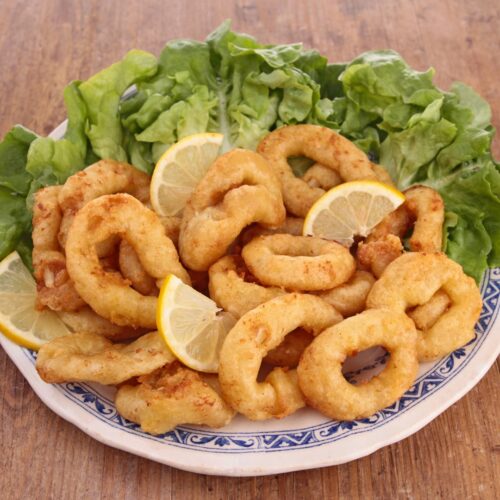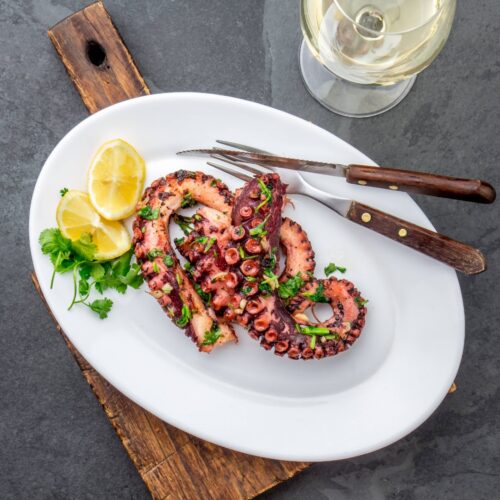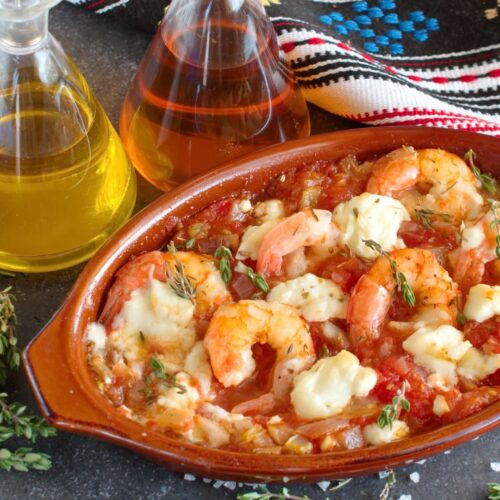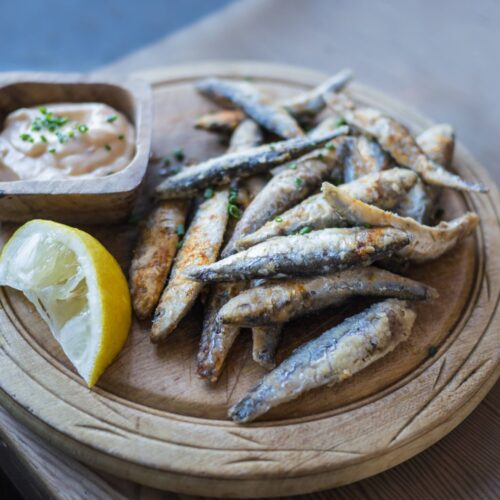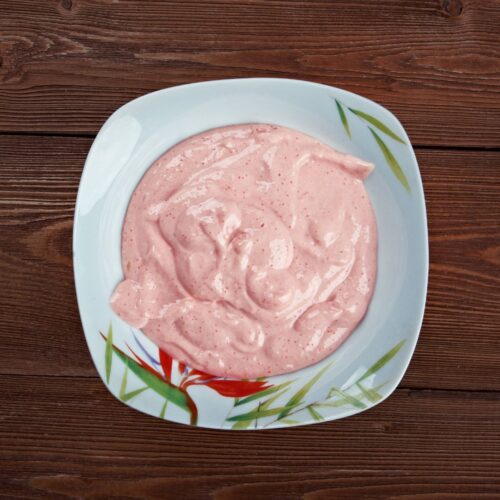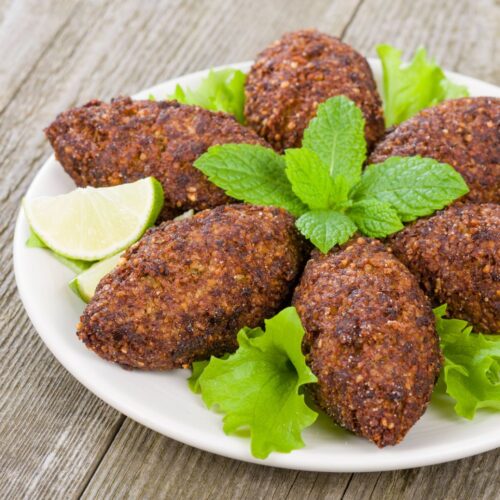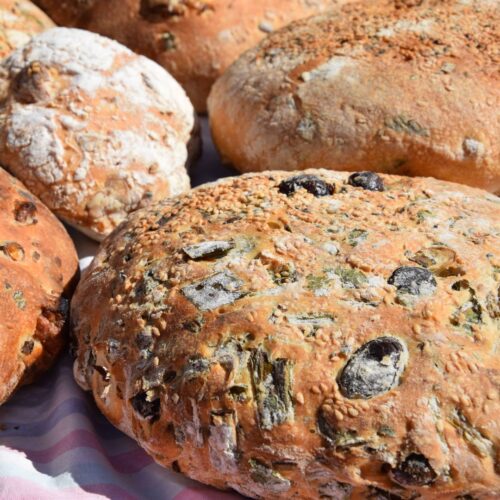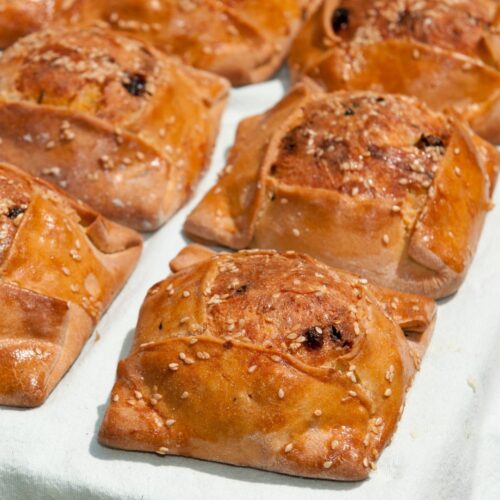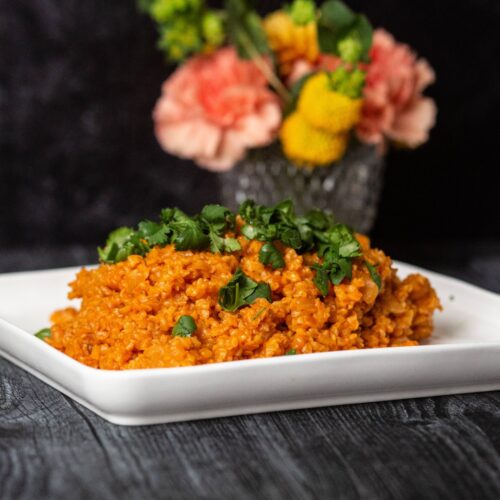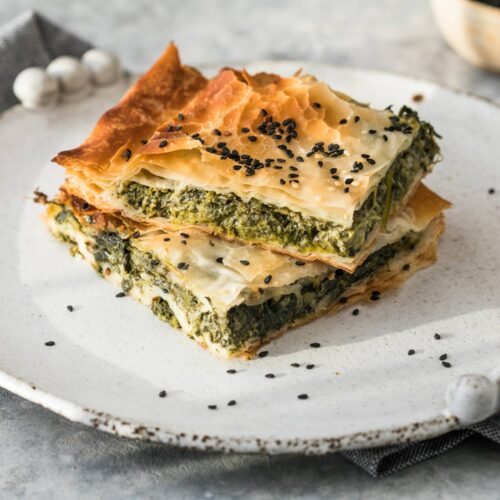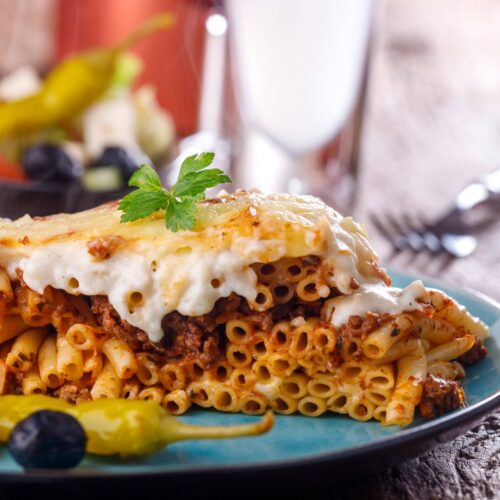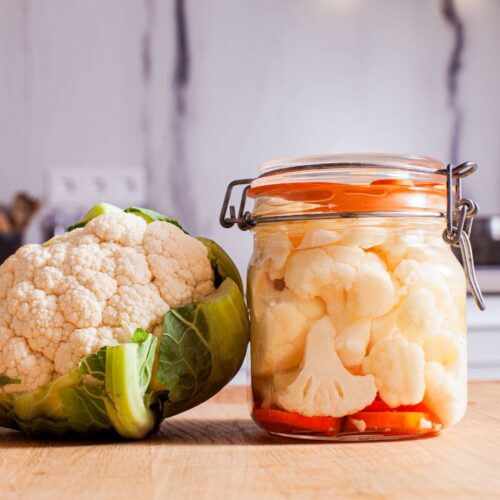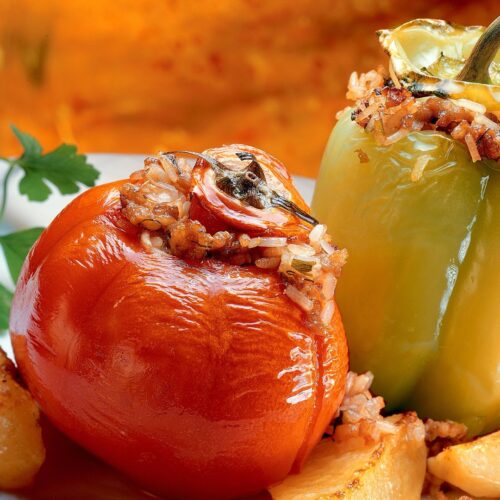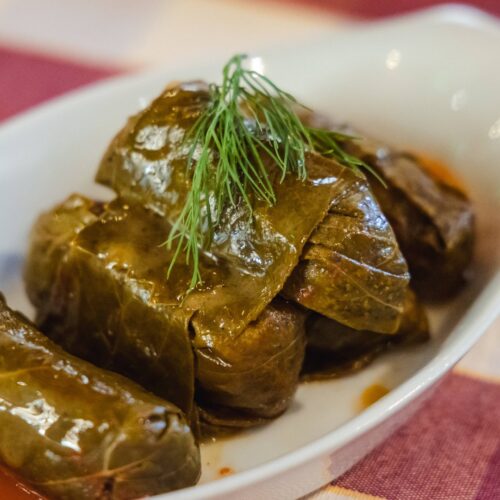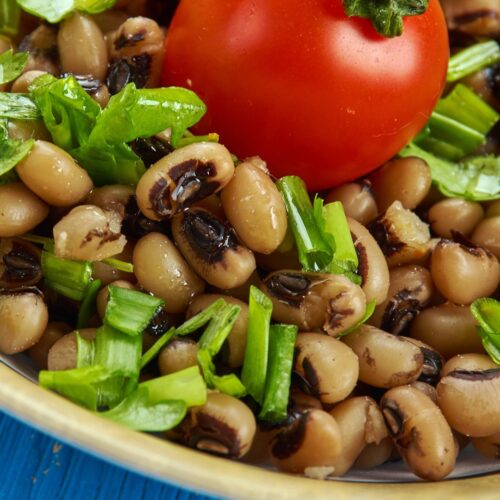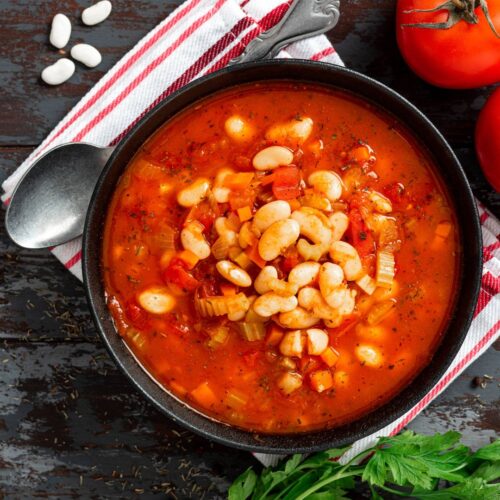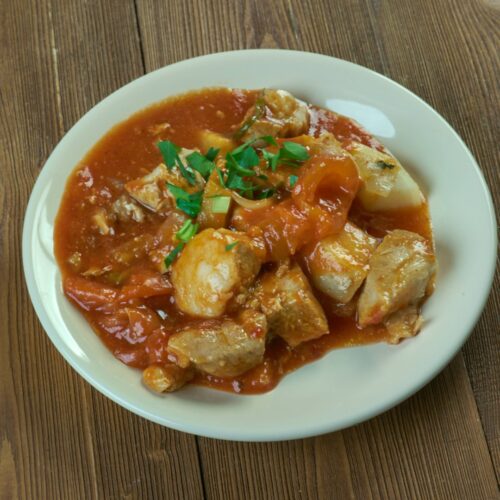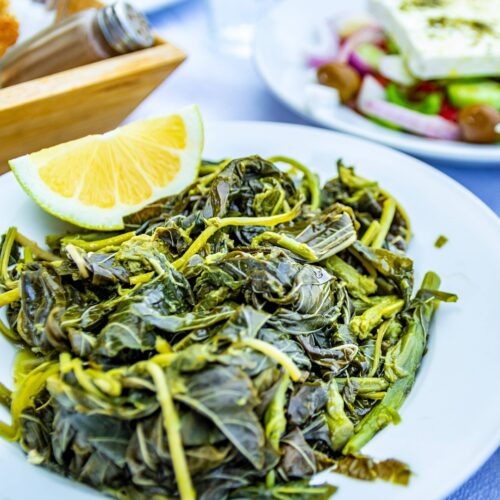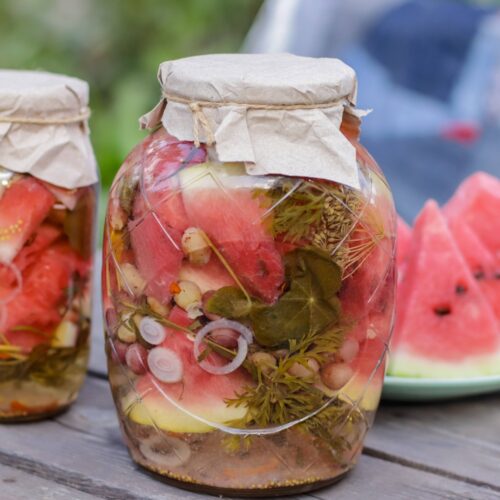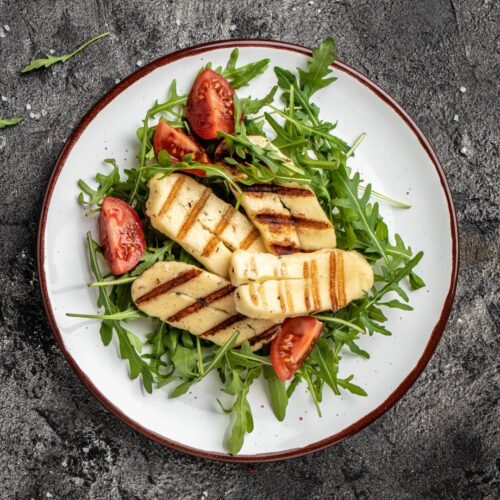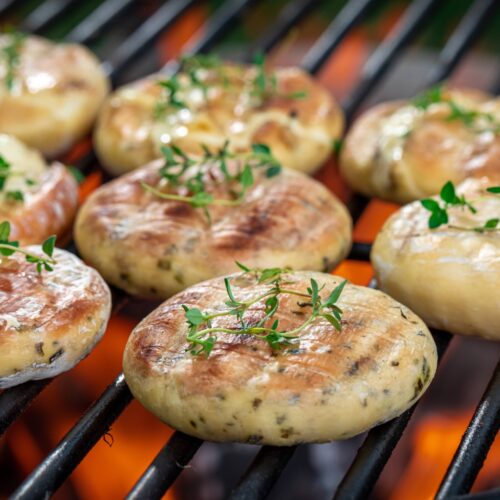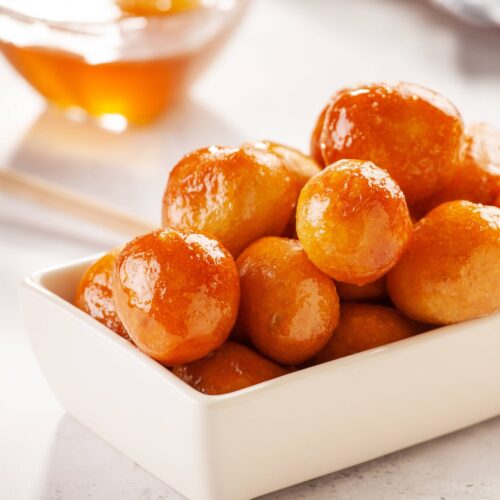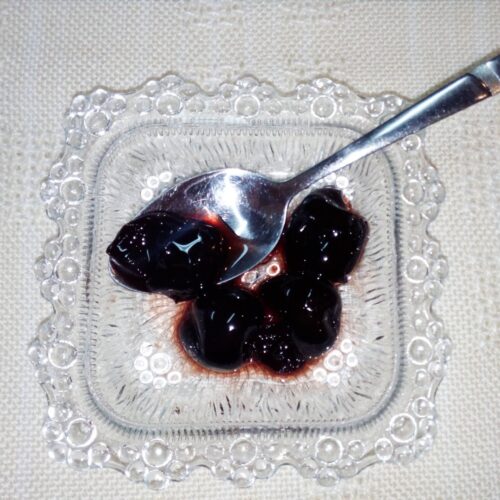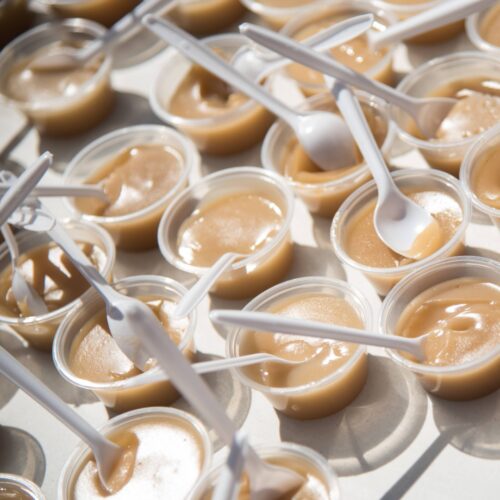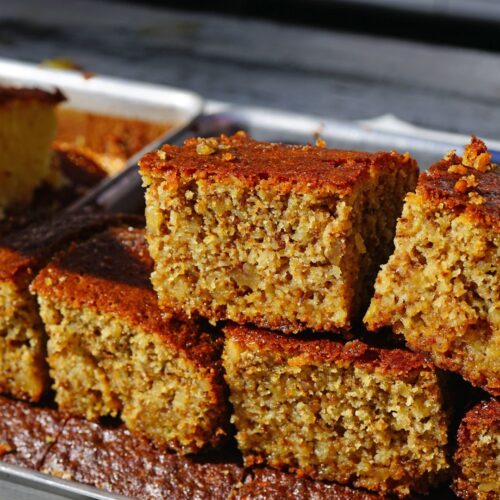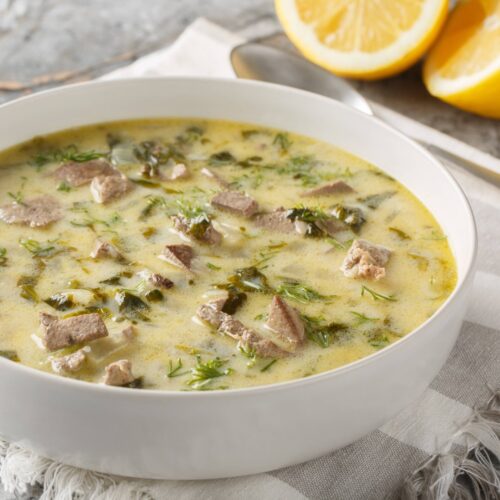THE ESSENCE OF CYPRIOT CUISINE
Cyprus shares many flavors with its neighbors, but its cuisine has a character of its own. Meals revolve around meze, a variety of small dishes served simultaneously, the use of fresh local ingredients, a love for mint and olive oil, and a focus on slow-cooked dishes. Cypriots also love their bread, sausages, and halloumi cheese, a staple from breakfast to dinner.
Cypriot cuisine is often compared with Greek cuisine, so we must break down some of the differences before proceeding. Greek and Cypriot cuisines share Mediterranean foundations, emphasizing olive oil, fresh vegetables, oregano, thyme, yogurt, feta cheese, and grilled meats. Both feature meze small plates and moussaka, dolmades, fasting with pulses and greens. Yet Cyprus sits at a crossroads, and over centuries absorbed more Middle Eastern, and Turkish influences, using more pork, bulgur pilaf with vermicelli, and unique cheeses. Cyprus blends Greek simplicity with Arabic elements (hummus over tzatziki, cumin/coriander), and black-eyed peas (louvi), and Greek cuisine leans more uniformly Hellenic.
While grilling appears across Greece, in Cyprus there is a strong focus on large-piece spit, like the classic souvla — large chunks of meat slowly roasted on a long skewer. On the mainland, skewers or smaller souvlaki are more common. Some describe Cypriot food as more rustic than Greek.
GRAINS IN CYPRIOT CUISINE
Wheat is the most popular, along with all Mediterranean countries, but there’s also slightly more variety, with a greater involvement of barley, corn, and rice in everyday dishes. Wheat is crucial for pita, an inland staple – a thick, oval-shaped, oven-baked bread. Bulgur wheat pilaf is common.
Cultivation and use of barley is quite significant, unlike in other Southern European Mediterranean neighbors. Barley is more drought-resistant and can thrive in the Cypriot climate with less water than wheat. Barley was historically more subsidised to ensure stable production even in less-than-ideal weather conditions. Barley features soups and breads; for example, hearty, nutritious, and crispy barley rusks (crispy bread).
Corn in Cypriot cuisine is an alternative flavor and texture to wheat breads. Polenta is sometimes served as a side. Rice pilafs are a staple, sometimes cooked with vermicelli, pine nuts, and raisins. Rice is also a common filling for stuffed vegetables (koupepia and dolma).
PRODUCE IN CYPRIOT CUISINE
Cypriot cuisine is rich in vegetables, but it also heavily features meat, dairy, and grains, which might balance or sometimes outweigh vegetable consumption. Vegetables are loved in salads, stews, and as grill accompaniments – chopped, sliced, and dressed with lemon and olive oil. The usual summer salad consists of celery leaves, stalks, parsley, coriander, tomatoes, and cucumber. Summer purslane is very popular, as are wild dandelion leaves.
The distinctive red clay soil of Cyprus is good for growing potatoes. However, the shortage of proper land and the need for irrigation meant that the potato’s importance declined. Cyprus potatoes are usually oval-shaped and have a unique, earthy taste; locals bake them in the indoor or outdoor oven fourno; many add salt, cumin, oregano, and sliced onion.
Cypriots observe numerous fasting days designated by the Orthodox Church. Although not everyone follows these guidelines, many do. On these days, the consumption of animal products is prohibited, so people typically eat pulse dishes instead. These dishes are sometimes cooked in tomato sauce with vegetables, like fasolada, but more commonly, they are simply prepared and dressed with olive oil and lemon.
Citrus, grapes, and figs are staples. Cyprus is known for its extensive pickles, even unusual produce like walnuts, watermelon rinds, and unripe grapes; also jams, jellies, dried and fruit preserves (eg. glyka tou koutaliou – slowly boiled fruit in sugar till it becomes a syrupy preserve).
MEATS IN CYPRIOT CUISINE
Livestock farming has long been an important part of agriculture, and crucial in the local diet. Many Cypriot villages and towns sit inland rather than on the coast. Some lie far enough from the shoreline that residents might spend their whole lives without ever seeing the sea, this tied locals a lot to animal husbandry. Pork is the most popular meat, from traditional charcoal grilling to sausages and preservation with smoke and wine. Red wine, actually, is a characteristic flavor in most of the charcuterie on the island.
Pork dominates in a way you won’t see in many Eastern Mediterranean cuisines. Before refrigeration, preserved pork was the main red meat source for Cypriots. That tradition stuck. You’ll find pork in signature afelia dish, where small pieces marinate overnight in red wine with crushed coriander seeds before getting sautéed. The coriander seed and red wine combination is practically a Cypriot flavor signature. Village sausages called loukanika get the same treatment: pork, salt, coriander, then red wine, left to cure for ten days to two weeks.
The grilling tradition splits into two distinct styles. Souvlaki uses small meat chunks on skewers, familiar across Greece. But souvla is the real Cypriot deal. Large chunks of meat from the neck and shoulder get skewered on a massive spit and slow-cooked over charcoal. It’s a social event. Friends gather around the fire, drinking beer and chatting while the meat cooks. Souvla shows up at Easter celebrations, weddings, and family gatherings. It’s considered the king of Cypriot meat dishes.
Coriander appears everywhere. Not the fresh herb, but the seeds. They’re ground or crushed into pork dishes, meatballs, and marinades. Mint shows up too, especially in anything with ground meat. Keftedes (meatballs) get laced with mint and often include grated potato instead of bread, giving them a texture distinct from Greek or Turkish versions.
The slow cooking philosophy runs deep. Stifado, a beef or rabbit stew with small whole onions, simmers for two to three hours in red wine with cinnamon and cloves. Kleftiko is lamb marinated overnight in wine, lemon, and herbs, then slow-roasted until it falls apart.
Poultry is the second in popularity; it is found in Cypriot meze, grilled kebabs, and the protein of choice in pitas and pies. Lamb and goat feature slow-cooked hearty dishes and are appreciated for their robust flavor. Beef does feature Cypriot cuisine, but it is not as widespread as others.
FISH AND SEAFOOD IN CYPRIOT CUISINE
As for the island on the Mediterranean Sea, the traditional cuisine must include seafood – and it does. Locals grill octopus, squid, sea bream, and red mullet, then finish them with lemon and sea salt. Grilling is common, though locals also prepare seafood soups and stews. Cypriot meze is often ocean-focused, offering fish roe salad, squid, and small fried fish.
Local fishermen in Cyprus deal with fewer fish than in the past. Studies show many coastal species are over-exploited, so catches have dropped and stocks are harder to rebuild. Climate change and invasive species also play a role.
EGGS AND DAIRY IN CYPRIOT CUISINE
Milk, as well as dairy products, are significant Cyprus. It is amazing how such a small island has produced a cheese as famous as halloumi – a semi-hard, unripened, brined cheese made from a mixture of goat’s and sheep’s milk. People on Cyprus have made it (or something like it) for centuries. Written records from 1554 mention a local cheese called “caloumi”. Traditional halloumi kept well without refrigeration. People brined it and stored it, which made it ideal for an island climate. This cheese has a high melting point, it can be grilled or fried without losing shape that makes it flexible in many recipes.
Another cheese, anari, is a soft whey cheese, like ricotta, that can be used in both savory and sweet dishes and often paired with honey.
Yogurt is a staple in Cypriot cooking, both as an ingredient and as a side alongside meaty stews. Trachanas (or tarhana) is a traditional dish, one of the oldest in Eastern Mediterranean, made from cracked wheat, fermented with yogurt. It is prepared as a soup with chicken broth, mainly in winter, for comforting nutrition. It is somewhat surprising that cooks in rustic places don’t usually put trahana on their menus, but modern chefs do.
OILS, NUTS, AND DESSERTS IN CYPRIOT CUISINE
Olive oil is a primary source of fat for salads, grilled veggies, meats, and bread dippings. Some seed oils are also used, like sunflower oil, but to a lesser extent.
Because of Cyprus’s location and historical ties, its sweets reflect a fusion of Greek, Middle Eastern, and broader Mediterranean influences. Many Cypriot desserts rely on semolina or flour, sugar or honey, almonds, walnuts, sometimes fruit, rose-water or mastic. These give sweets a warm, aromatic, nutty or floral flavour — not overly rich, but comforting. You’ll find desserts that are crunchy outside and soft inside (like fried dough balls soaked in syrup), flaky and nutty (layered pastries or filo-based sweets), dense and chewy (semolina cakes), or silky and light (creamy puddings).

